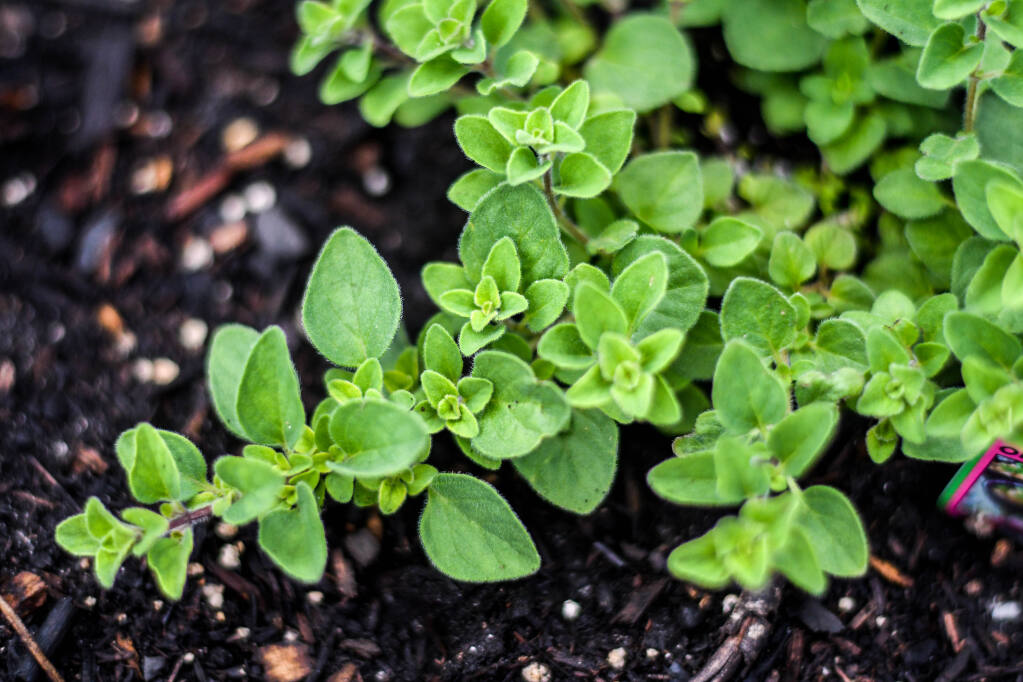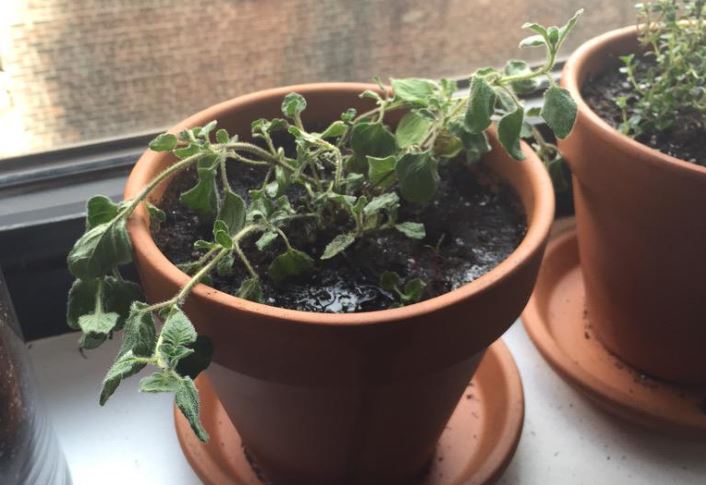
Oregano is a very popular herb in the culinary world and is often paired with basil to create a sensational combo in pastas, pizzas, and many other Italian cuisines. Dried oregano is often sold by itself and as an Italian herb mix.
It also enhances your garden! Many insect pests find their host plants by smell – but if all they can smell is your oregano collection then they get lost! And the best thing about it? You can grow oregano in pots indoors too – it will make your space smell great and give you free herbs all year round! No question, that home-grown oregano is far superior to what you buy at the store. The flavor is just more intense and the nutritional value is much higher.
This article serves as the ultimate guide to successfully growing and utilizing oregano in your garden or indoor space.
Oregano varieties and uses
Let’s start with a little bit of more background on this wonderful herb. All true oregano varieties are members of the mint family and share many characteristics other than flavor. Here are some common oregano types that you might already heard of:
- Common Oregano: also known as origanum vulgare, it’s an aggressively-spreading variety that has little flavor.
- Greek Oregano: the most commonly sold variety for spaghetti sauces and other pastas. It looks the same as common oregano but has a much stronger flavor.
- Italian Oregano: A cross between common oregano and sweet marjoram, this variety goes well in soups and pasta sauces.
- Sweet Marjoram: a milder, sweeter version of common oregano.
- Golden Oregano: a distinctive yellow variety with a strong scent and a similar flavor to other varieties.
Oregano has many culinary applications:
- Sauces: any tomato or pesto sauce used on pasta likely has oregano in it.
- Pizza: the special flavor of pizza sauce is partly due to oregano. You can also put it the herb in the crust.
- Meat: a little oregano goes well with chicken in a cheese or tomato sauce. It’s also used in marinades.
- Vegetables: Oregano can be added to salads for flavor. You can also garnish vegetables like zucchini and eggplant with a little bit of oregano.
Oregano has health benefits as well. It’s high in dietary fiber and has been found to be an anti-oxidant and an anti-inflammatory.
What this plant needs
Being native to the Mediterranean, oregano is adapted to dry, hot conditions, but just leaving it out in the sun without any care just isn’t going to cut it. Here are some things you need to pay attention to:
- Sun: oregano likes full sun. Don’t plant it where it will be shaded, otherwise, it just won’t grow optimally (or at all).
- Soil: when it comes to choosing the right soil for this herb, well-draining soil with a neutral or slightly acidic pH is ideal.
- Watering: Weekly watering is a great way to go, but don’t over-water your oregano. Let the soil dry out before watering.
- Temperature: Oregano likes the heat. If you live in a cold region, don’t plant your oregano outside until the danger of frost has passed.
- Fertilizer: not necessary for this herb. Soil with too much nutrition will make the flavor of the leaves less potent.
Planting and Growing Oregano

Oregano, like most herbs, is mostly grown from cuttings – much more commonly than from seeds. Many gardeners choose to buy pre-started plants from a nursery or take cuttings off their existing plants. If you want to plant your own, you need to pay attention to spacing, depth, when you plant and where exactly you plant. So let’s take a look at these!
- Spacing: space your plants 8 to 10 inches apart. A fully mature plant is roughly 24 inches tall and 18 inches wide.
- Depth: if growing oregano from seed, push the seeds just under the soil surface.
- Timing: aim for the warm season with oregano. If you live in a cold climate, start your plants 6 to 8 weeks before your local frost date to ensure your plants will have a long enough growing season.
- Watering: Allow the soil to dry out between waterings. Weeky watering is the way to go here, but remember: Don’t overwater your oregano!
- Pots: growing oregano in pots is a great idea since it can become invasive. Use a pot 12 inches in diameter and fill it with well-draining potting soil.
As with many other plants, it is also important what plants you surround your oregano with. For companion plants, Oregano is pretty happy with these: cucumbers, strawberries, cabbage, tomatoes, and other herbs.
Care
As stated before, oregano plants grow well in dry, hot conditions and don’t need a lot of water. Fertilizer isn’t usually necessary since oregano does well in poor soil.
- Pruning: prune your oregano regularly so it doesn’t become leggy. You should do this when they’re 4 inches tall to promote more extensive growth.
- Winterizing: in warm climates, oregano is a perennial herb that will come back for 5 to 10 years. In cold climates. plant a variety suited for the cold so you’ll get volunteer plants each year.
As an aromatic herb, oregano uses its strong scent to repel many common insect pests. However, it can fall prey to other things as well:
- Aphids: these bugs will eat almost any garden plant and are farmed by ants. They can be washed off with a strong jet of water. Ladybugs consider them a tasty snack.
- Stem and Root Rot: rotting can be caused by overwatering and waterlogged soil.
- Leaf Spots: Too Much Nitrogen can also cause yellow spots on Oregano Leaves. If you don’t pay attention to this, the whole plant can turn yellow and eventually, die.
- Cutworms: these evil creatures look like a white half-moon since they’re usually curled up. They chop down the plant at the base and feed on it. If you have lots of cutworms, consider placing tin cans around the stems with both sides cut out – cutworms won’t climb these.
Time to Harvest
When it comes to harvesting oregano, timing is flexible as long as the leaves have appeared. However, it’s important to be mindful of not cutting too many leaves at once, as the plant requires some for photosynthesis. Once the plant is well-established, more leaves can be safely harvested. They can be removed by either gently pinching the stem or using a sharp knife.
After removing the leaves, they can be used fresh or preserved for future use. To preserve them, one option is to dry the oregano leaves either in a dehydrator or in the oven. Dried leaves can be stored for several years.
Another preservation method is freezing the leaves. Simply place them in a sealed plastic bag, ensuring to remove air without crushing the leaves. When using frozen oregano leaves, there’s no need to thaw them beforehand.
What could possibly go wrong?

Well, plant propagation does not always go as planned. When it comes to growing and caring for your own oregano herb, these are the common problems you can also encounter:
- Wilting / Dying Plant: this is often caused by wet feet. Scale back your watering.
- Discolored Leaves: this is likely caused by a fungus. Remove the plant from the garden and burn it – don’t compost infected plants!
- Potted Oregano Dying: your pot may be too small – it should be at least 12 inches in diameter. If it’s indoors, it may not be getting enough light – in this case, consider using grow lights.
To Sum it Up
Oregano is an easy herb to grow and home-grown oregano is far better than anything you’ll buy in the store! It’s also easy to grow and very prolific – the right variety for your region will propagate itself in your garden year after year. Go ahead and give it a try! Best of luck and happy gardening!
Frequently Asked Questions
Buy a pre-started plant and give it 8 to 10 inches of space. Plant it in low-nutrient soil with lots of sun. Prune it regularly to encourage extensive growth.
How Do I Plant Oregano?
Plant your seeds 8 to 10 inches apart. Push them into the soil just below the surface.
How Big Does Oregano Get?
A fully mature species gets roughly 24 inches tall and 18 inches wide.
Where Do I Plant Oregano?
Plant it in a location that has low-nutrient, well-drained soil and gets lots of sun.
Does Oregano Like Full Sun?
Yes, oregano is a sunny crop so it likes full sun. Don’t plant it where it will be shaded, otherwise, it won’t grow optimally.
How Do I Care For Oregano?
Give Oregano at least 6 hours of direct sunlight and water it only when the soil dries out – usually weekly. Also, prune your oregano regularly so it doesn’t become leggy. You should do this when they’re 4 inches tall to promote more extensive growth.

